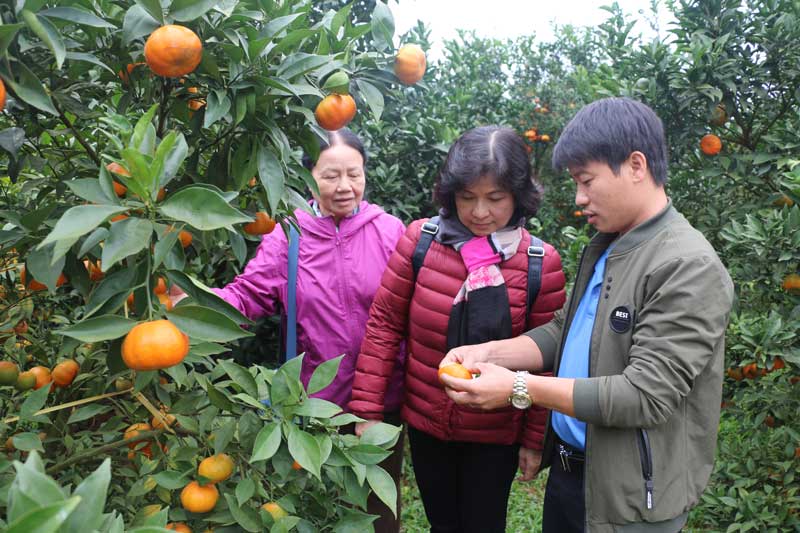
(HBO) – Taking selfies besides fruit-laden orange trees, harvesting red and succulent Canh and yellow-flesh oranges, and enjoying sweet and juicy fruits are alluring experiences that tourists can have when visiting orange orchards in Cao Phong district from November every year.
Ripe oranges cover the two sides of the road from Hoa Binh
city to Cao Phong with bright yellow. Endless orange gardens can be seen right
in the centre of the district. Roads to this orange farming area has been
upgraded and expanded, thus facilitating transport and tourism activities.
The owner of the Thuy Nga orange orchard in Area 4 of Cao
Phong town, Cao Phong district, instructs visitors how to choose high-quality
fruits.
Many cars have come to this
area on recent days, bringing tourists to seemingly limitless orange farms on
gently sloping hills.
Fruit-laden orange trees are the first thing to
see when arriving at the Thuy Nga orchard in Area 4 of Cao Phong town. Nearly 10
sets of tables and chairs were placed in the yard so that visitors can rest,
enjoy tea and taste local oranges.
Visitors to the farm vary. Some delegations
whose business trips traversing Hoa Binh came to the garden to buy oranges.
Many groups of elderly also dropped by to have a tour of this place.
Over the last couple of years, some travel
companies have added orange farms to tours of Hoa Binh province aside from
familiar destinations like Giang Mo and Lac villages and Hoa Binh Lake.
The People’s Committee of Lac Son district held a ceremony on April 28 to receive the provincial relic certificate for the ancient rock carving site at Suoi Co stream, located in My Thanh commune.
A special music show titled "The country is in the fullness of joy” has been held at Hoa Binh Square in Hoa Binh city in celebration of the 50th anniversary of the liberation of the South and national reunification (April 30, 1975–2025).
The People's Committee of Lo Son commune, Tan Lac district, has organised the local annual traditional stream fishing festival on April 19 - 20.
As a land deeply intertwined with human history and Vietnam’s millennia-long journey of nation-building and defence, Hoa Binh is often revered for its epic tales and legends.
Residents of Hoa Binh boast a rich cultural identity, reflected in their unique language, traditional attire, customs, and folk melodies – described as "sweet as honey, clear as a mountain stream.”
Lac Son district’s Vu ban town held the 2025 Truong Kha temple festival on April 12–13 (the 15th–16th days of the third lunar month). Since its revival in 2019, the festival has been organised every three years, preserving valuable intangible heritage while meeting the community’s cultural and spiritual needs.



